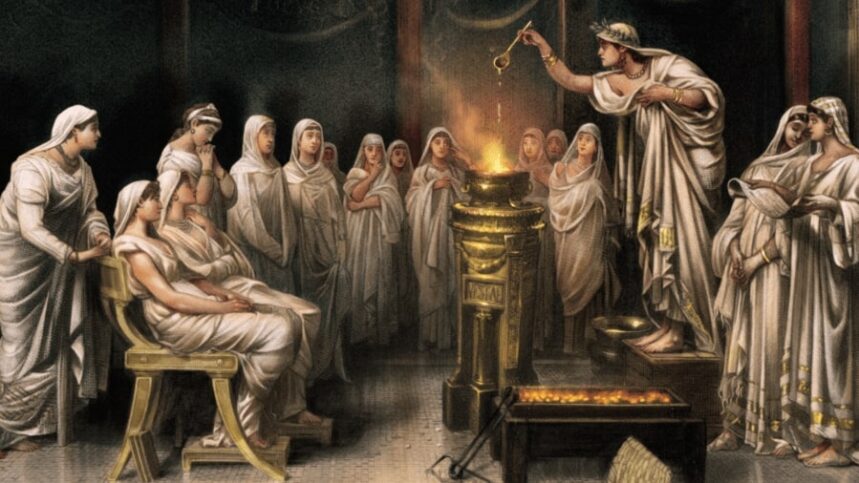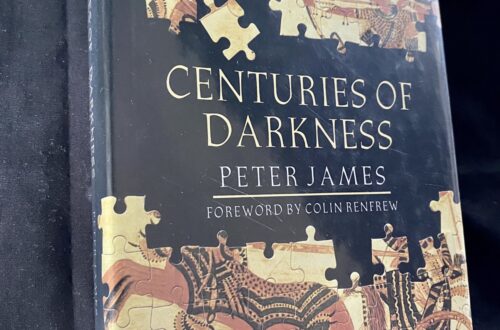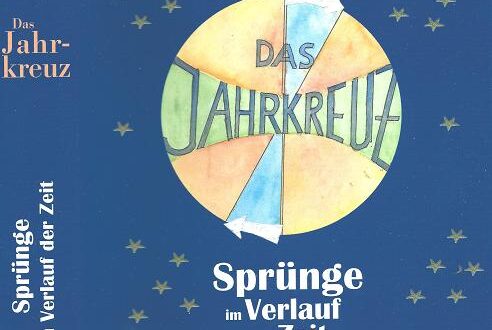
Priests or Priestesses? Neither!
Anyone who – like many authors today – consistently speaks of “priests” whose task it was to calculate the calendar, is doubly wrong. Firstly, in the beginning those were mostly women, and secondly, they were not priests but members of a clan and tribe like everyone else, not distinguished by office or consecration, but only by their ability (just like healers or judges). At that time (Megalithic and early Metal Age) it was the women who did the counting, as I deduced from observation among Berbers in the High Atlas (North Africa).
How counting developed among Berber people
When a hen has hatched her chicks, the little ones roll around under and beside her, but by the time they move more and more distant from their mother and are soon no longer entrusted to her protection, which is why the owner has to take care of them herself, especially in the evening when she locks up the chickens. Then she has to find out whether all the chicks have returned. This is how she does it: when the little ones have eclosed, she sticks the pointed part of each egg into a large patch of dung on the wall of the stable, this is called the chick school. In the evening she compares the number of egg tips with the number of chicks and looks for the missing ones if there are more eggs than chicks. For a quick overview, she invented a mnemonic verse that sounds something like this: yän-sin-krat-kozd-smos-sdis-sad-tam-tsa-merau. Today these are the Berber numerals from one to ten.
At first it was just a memory verse, syllables taken as sound, the order of which was fixed. She said the spell, looking at the eggshells and then at the chickens heads. If the last word is equal, all the little ones have arrived home. If not, the search began. The Berber woman could not have said how many chicks were missing, because the keywords were not yet numerical terms. That only came about later, perhaps with bartering which presumably was in the woman’s sphere of life.
German traditions
This reminds me of Goethe’s Hexeneinmaleins in Faust (I). Faust is led by Mephisto into a witch’s kitchen, where he watches as the witch brews him a rejuvenation potion while she recites the witch’s spell that counts the numbers from one to ten, albeit embedding them in a confusing way:
This you must ken!
From one make ten,
And two let be,
Make even three,
Then rich you’ll be.
Skip o’er the four!
From five and six,
The Witch’s tricks,
Make seven and eight,
‘Tis finished straight;
And nine is one,
And ten is none,
That is the witch’s one-time-one!
Now, certainly enough people have wanted to solve this riddle or may have even solved it; I agree with Goethe himself, who wanted to bring here the nonsense of a mutilated tradition, not a mystery that needs solving. But there is something to it! It is the connection of witches to memories that have become incomprehensible, of an early period of knowledge formation, the beginning of counting. So this mnemonic contains only the first ten numbers, inserted into a kind of verse that is easier to remember than the dry sequence of numerals.
As I assumed for the first steps in those (distant) early days: „The cattle breeder had to learn to count for the first time, for him it was vital: He also had to write down final number, as clearly as possible. As simply as the Berber woman keeping chicken, who simply sticks half the egg shells with manure on the wall of the stable; once the chicks have eclosed she can then always read from this so-called “chick school” how many have to return to the nest; goatherds cannot do that: A counting system that records the highest possible sums is necessary for them. Its use led to superiority over other tribes that didn’t invent one.“ (from “Horra” 2003, p. 53)
‘Monthly Calendar’
Another consideration supports the thesis that it was women who first attempted a calendar, and out of necessity: It was not a matter of estimating when farmers would sow. nor the seasonal migrations of herdsmen; that could be determined by the respective weather. It was about the monthly menstrual period, the rhythmic repetition of which was an important factor in a woman’s life. This may have been the very first calendar ever, but with an individual time measurement. The rigid course of the moon change can only have been used as an auxiliary measure by a few women, an exact counting of the days between menstruations was important to know whether she is pregnant or when she is fertile, and it could possibly also indicate an illness. The number of cycles could be noted by signs, such as scraps on a sacred tree (known from North Africa to Central Asia). For the exact number of days a counting system had to be kept to enable comparison with the past cycles, hence a calendar. The total number of 40 should initially have been sufficient, as old customs and writings suggest. Men did not have this need.
It was probably not coincidental that the very witches with whom the beginning of counting is connected were also those who dealt with gynecology and birth control, as Heinsohn/Steiger have shown analysing the documents of the Inquisition: Menstrual blood played an important role in all magical acts of which witches were accused.
So: Women were first to use counting.
The anthroposophist Frank Teichmann (1999, p. 204) writes about the consciousness of the Celtic druid priest, “one could also say, ‘the megalithic scholar’ (he was not a priest in the ancient oriental sense)”. That’s right, but before the time of the Celtic druids it was mainly women who were concerned with ‘calendaring’ and celestial events. Only in the warlike “Iron Age” traditional order got out of hand and had to be enforced by appointed priests and judges.
That’s what I meant (Jahrkreuz, p. 26): Determining the beginning of the year was a “priestly task” (among the Romans, although this tradition is also uncertain): The Roman Vestal Virgins may have had a part in this. The Kaland houses, in which the calendar was maintained in Germany, were open to women and laypeople alike.
References
Goethe, Joh. Wolfg. (1790/1808): Faust (Part I, Verse 2540 to 2552)
Heinsohn, Gunnar / Steiger, Otto (1985): Die Vernichtung der weisen Frauen (München)
Teichmann, Frank (1983/1999): Man and his temple. Megalithic culture (Urachhaus, Stuttgart)
Topper, Uwe (2003): Horra. The first Europeans (Grabert, Tübingen) brief introduction in the archive: horramigration
(2016): Das Jahrkreuz. Sprünge im Verlauf der Zeit (Hohenrain, Tübingen) discussion here
(2019): The Kaland brothers: reference to the pre-Christian religion (here in the reading room die kaland bruderschaften)
Translated from German by Nick Weech
Die Übers. des Hexeneinmaleins folgt weitgehend der Übersetzung von Bayard Taylor (1871)




